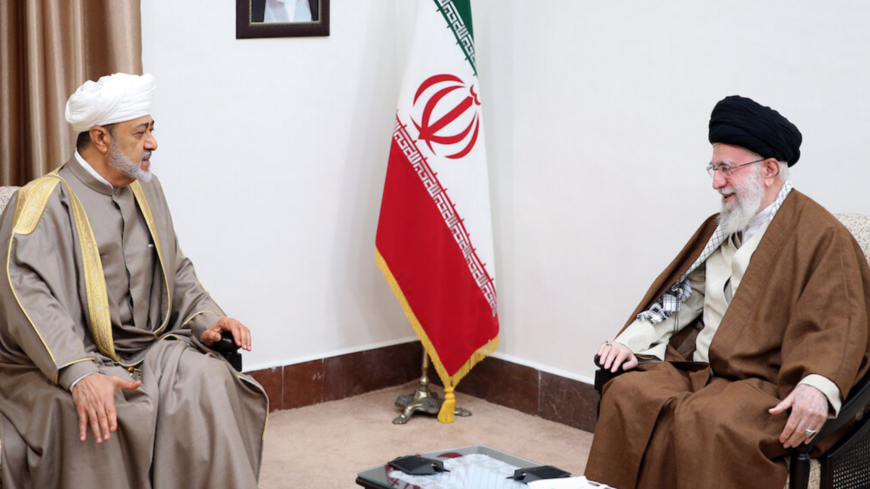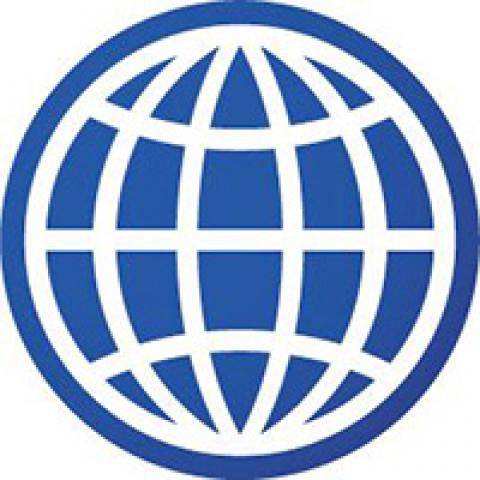Sultan Haitham in Iran
The Joint Comprehensive Plan of Action (JCPOA), or Iran nuclear deal, is “not on the agenda right now,” according to the White House, but US-Iran diplomacy nonetheless continues indirectly through trusted intermediaries.
Axios reported this week that White House Middle East Coordinator Brett McGurk was in Oman May 8 for discussions with his hosts regarding Iran.
The United States and Iran, while not speaking directly, have relied on the European Union, Oman and others to work through what might be possible in the absence of the JCPOA. The so far elusive package — known as “less for less” — is expected to include some form of sanctions relief, short of the JCPOA, and unfreezing as much as $7 billion in South Koran funds owed to Iran, in return for Tehran implementing a cap on its enrichment activities to prevent it from making further progress toward a potential nuclear weapon.
The visit to Tehran last week of Oman’s Sultan Haitham bin Tariq Al Said, a trusted and valued partner and interlocutor by both Washington and Tehran, including his meeting with Supreme Leader Ayatollah Ali Khamenei May 29, has sparked speculation that there may be even more traction on US-Iran diplomacy, says Al-Monitor contributor Ali Hashem.
Oman has been instrumental in US and regional diplomacy with Iran, including the release and exchange of Western detainees held there. Following Sultan Haitham’s visit this week, Iran released a Danish and two Austrian citizens from detention following mediation by Oman, as Adam Lucente reports. Those releases today follow those of a Belgian and two French citizens in May.
Any progress in US-Iran diplomacy ultimately depends on the return of the three American citizens detained there — Siamak Namazi, Emad Shargi and Morad Tahbaz.
“All parties have been especially quiet on what might or might not be happening,” says Hashem. “Sultan Haitham’s personal diplomacy, in Iran, seems to elevate the level of engagement on a range of issues. He and Khamenei discussed the thaw in Iran’s ties with Saudi Arabia and Egypt. We don’t know, but we can probably assume they discussed the US file as well.”
Iran and the IAEA
The most recent reports by the International Atomic Energy Agency (IAEA), the watchdog organization overseeing Tehran’s nuclear program, suggest what might be Iran’s post-JCPOA approach to its nuclear program.
The IAEA board of governors meets in Vienna June 5.
According to confidential assessments circulated to IAEA member states this week, Iran has increased its stockpile of highly enriched uranium by 27% over the last three months, and could have enough fuel for a nuclear weapon in two weeks or less, The Wall Street Journal reports.
Iran is otherwise sticking to a widely understood US red line about expanding enrichment beyond 60% to 90%, or weapons grade, to avoid United Nations snapback sanctions or worse.
Meanwhile, the IAEA is shelving longstanding files related to questions about undeclared nuclear activities, and Iran has agreed to reinstall cameras and monitoring equipment at key facilities.
“Overall the IAEA report may be two small steps forward, given Iran’s incremental cooperation, and one big step backward, because of the continued expansion of its uranium stockpile,” says Mark Fitzpatrick, associate fellow for strategy, technology and arms control at the International Institute for Strategic Studies. “That Iran can produce five nuclear weapons in such short time is worrying.”
The IAEA report suggests Iran may be willing to operate within the constraints of its commitment as a member of the Non-Proliferation Treaty in the absence of the JCPOA, assuming that the IAEA continues to work toward closing the remaining safeguard files. The stockpiles are likely to be used as a bargaining chip, and even a deterrent, pending some type of understanding with the United States on whatever a less-for-less turns out to be.
Israel’s ‘clear message to Iran'
Israel has been alarmed by both the IAEA reports and the prospect of US-Iran backchannel diplomacy.
Prime Minister Benjamin Netanyahu said, “I have a very clear message to Iran and to the international community. Israel will do whatever it takes to prevent Iran from having nuclear weapons," as Rina Bassist reports.
Meanwhile, Hezbollah staged an unprecedented show of force in mid-May in southern Lebanon which, as Ben Caspit reports, comes against a backdrop of mounting threats by Israel against Iran, and “resurgent hints of preparations for an Israeli military offensive against Iranian nuclear facilities.”
Despite Israeli concerns, US-Israel security coordination on Iran seems as well coordinated as ever.
CENTCOM Commander Gen. Michael “Erik” Kurilla, who oversees all US military forces in the region, spent three days in Israel this past week, as Jared Szuba and Rina Bassist report.
Israel’s top national security officials — Shin Bet head Ronen Bar, Strategic Affairs Minister Ron Dermer and national security adviser Tzachi Hanegbi — were all in Washington this week to discuss Iran and other issues with their US counterparts, as Rina Bassist reports.
Israeli leaders latched onto congressional testimony March 23 by Joint Chiefs of Staff Chairman Gen. Mark Milley that Iran could make enough fissile material for four or five nuclear bombs in “less than two weeks,” an assessment with which Israeli intelligence is well acquainted, Ben Caspit writes. “What stunned Israel’s defense establishment,” adds Caspit, “was Milley’s claim that once Iran produces sufficient military-grade uranium, it could put together a nuclear weapon within ‘several more months.’”
“The Israeli reaction, and timeline, may be an exaggeration,” according to Ali Vaez, Iran project director at the International Crisis Group. “The IAEA report doesn’t signal any significant shift in Iran’s capability, or that it has decided to pursue a weapon. They want to nip any diplomatic initiative in the bud before it can move forward.”
Uncertainty in the Gulf, political headwinds in Washington
The Biden administration, while putting aside the JCPOA, still prefers a diplomatic approach to Iran that prioritizes de-escalation and de-confliction in both the region and its nuclear files.
Although the United States has strengthened its overall deterrent posture and supported regional initiatives to defuse tensions with Iran, including the Saudi-Iranian agreement to resume ties in March, Gulf capitals are uneasy about what they perceive as a lack of clarity about US policy in the region, especially after Iran seized two oil tankers on April 27 and May 3. The UAE Foreign Ministry said May 31 that it had withdrawn its participation from the Combined Maritime Forces coalition, although the United States has not received formal notification of the withdrawal, Jared Szuba reports.
The Biden administration may not mind the Israeli pressure, and threat of force, to keep Iran in check until it can reach some type of diplomatic understanding with Iran.
For now, a “less-for-less” arrangement may be the most realistic possibility, given political headwinds in both Washington and Tehran, and some unease about both US and Iranian intentions in the region.
“[US President Joe] Biden is in an election cycle, and the types of sanctions relief Iran is seeking won’t pass muster with the Congress,” Vaez told Al-Monitor. “The gap between Iran and the United States may therefore be unbridgeable in the short run.”
“Iran, too, may prefer to keep tensions down as it continues to reconcile with a struggling economy and the political and social fallout of the protests following the death of Mahsa Amini in September,” adds Vaez. “The best possible outcome, for now, may be an ‘understanding’ to keep things from boiling over.”









